Palmyra (3)
Q5747Palmyra or Tadmor: oasis in the desert between Damascus and the Euphrates, important trade center, and capital of a semi-indepent state in the third century CE.
The Second Century
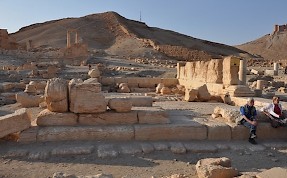
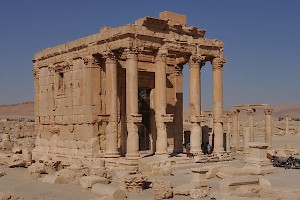
Even more impressive than this road was the Colonnaded Street that led to the east, in the general direction of the Senate building, the market (agora), and the temple of Nabu. It was eleven meters wide, and was flanked by porticoes that were seven meters deep. At the end was the Tetrapylon: four towers, supported by four columns of pink granite from Egypt, carrying statues. The Colonnaded Street would later be extended to the east, to the temple of Ba’al, where the Palmyrenes, by the time of the emperor's visit, were constructing a monumental entrance. In the days of Hadrian, however, the monumental main street of Palmyra stopped just before the Senate building.
 Palmyra, Colonnaded street; temple of Ba'al in the background |
 Palmyra, Colonnaded street |
 Palmyra, Colonnaded street, Tetrapylon |
 Palmyra, Agora |
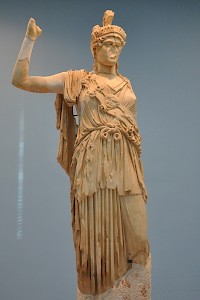
Road construction was continued after 150. Now, the street passed along the Senate building to the temple of Nabu. To the north of the street, a bathhouse was built that is now named the Diocletianic Baths, after the emperor who ordered the final construction phase. Columns of grey granite were bought in from Egypt - it must have cost less to cut than to transport them. Beyond the bathhouse, the sanctuary of Ba'al Šamem was renovated as well. Even more to the north, the Roman army created an exercise field.
This was also the moment when the temple of Allat, in the western part of the city, was rebuilt. A really splendid statue of the goddess, a copy of an original by Phidias from the fifth century BCE, was imported from Athens. Made of Pentelic marble, it still was among the most impressive objects from the desert city until it was destroyed by terrorists in 2015/2016.
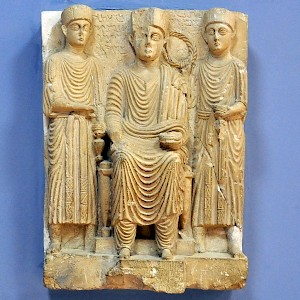
In 193, a new dynasty rose to power in the Roman Empire: the Severans. Interestingly, among them were several powerful women from Emesa, who made everything Syrian look interesting in the capital of the Mediterranean world. Palmyra appears to have benefited. In 212, the emperor Caracalla awarded the rank of colonia to the desert city. Twenty years later, in 232, the emperor Severus Alexander paid a visit to Palmyra.
Construction work continued. The Palmyrenes built the third part of the great east-west axis, which started at the temple of Nabu and continued along a fountain to the great temple of Ba’al. Because it connected the two main sanctuaries of the city, and must have been important during the Akitu festival, this section of the road is often called Via Sacra or “Sacred Road”.
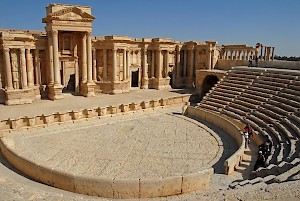
Other projects from this period included the renovation of the temple of Nabu and the construction of a fine theater. It was situated close to the building of the Senate building, which suggests that the theater could also be used as a meeting place for popular assemblies. There is no direct evidence for this, but it was certainly not unusual. An arch, erroneously called “Arch of Hadrian”, and a sanctuary for the imperial cult can also be dated to this phase.
Finally, it should be noted that most of the famous Palmyrene funerary portraits date to the second and first half of the third century.







